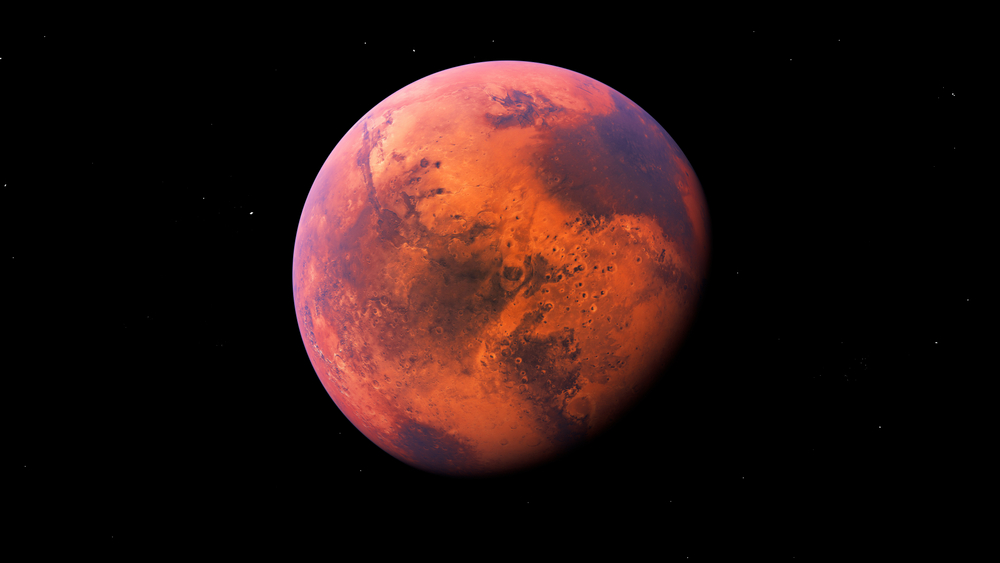Born on Mars? Your Birth Chart Could Look a Lot Different

The Great Space Race is still on. Government agencies and private investors eye the Moon, Mars, and beyond for human exploration. Billionaire Richard Branson and crew completed a successful suborbital test flight with the VSS Unity earlier this year. Jeff Bezos took a similar flight a week after Branson, and Elon Musk now eyes Mars for his first SpaceX colonization efforts. When the first humans will be born outside of Earth is anyone’s guess, but what will their natal charts look like?
How Birth Charts Are Made
To understand how space colonization could affect birth charts, we should look at basic chart construction. When you view your chart, you’re seeing a snapshot of the sky as it appeared at the place, date, and time of your birth. It maps the positions of the Sun and eight major planets plus asteroids and dwarf planets like Pluto. You’ll also see key points such as your rising sign, midheaven, and lunar nodes.
To get all that complex data, astrologers and online birth chart tools ask for your birth date, place and time. They use your birth place’s latitude and longitude in drawing up your chart. That’s why Earth technically doesn’t appear on your chart — because astrologers design those natal charts from an Earth-centric view.
When There’s Life on Mars
The 2017 film “The Space Between Us” tells the tale of Gardner Elliot, the first human born on Mars. Desiring to find his father, the 16-year-old travels to Earth. He must deal with medical issues such as lower bone density and an enlarged heart. But if Gardner Elliot were real, how would an astrologer create his natal chart?
Toronto astrologer Franco Soulbody discusses this conundrum in one of his blog posts. Soulbody explains that Elliot’s birth chart would use Mars as the chart’s center, mapping planetary positions as they’re viewed from the Red Planet. A Martian day is just slightly longer than Earth’s, clocking in at 24 hours and 37 minutes. Therefore, a roughly 24-hour clock could be used to find the location of planets and points to record them on Elliot’s chart.
Scientists are still trying to figure out how timekeeping would work on the Red Planet. A Martian year is 687 days – almost 1.9 times longer than an Earth year. Astrologers working with Martian-born clients would have to use its calendar when drawing up a natal chart.
Cycles and Meanings
Soulbody adds that astrologers could still use our modern 12-sign zodiac on Mars. However, their movements and cycles may work differently than on Earth. Mars and Earth are usually several hundred million miles apart – as of August 30, they’re separated by about 392 million miles or 2.6 astronomical units. Considering that inner planets like Venus and Mercury lie closer to the Sun, the difference in distance could significantly impact their cycles as seen from Mars. But this may have lesser effects on slow-moving outer planets like Saturn and Pluto.
For Martian-born people, most planetary meanings and energies would remain the same. Jupiter would still rule the ninth and 12 houses along with Sagittarius and Pisces, for example. But what would happen with Mars and Earth? Soulbody proposes that Martians would have an Earth sign in their charts. But since Mars is traditionally the planet of drive, ambition, and passion, another body would have to take its place.
Other Lingering Questions
Astrology on Mars could be more complex than we think. Many more issues remain to be resolved. For instance, would Martian clients use Earth’s moon, Luna, or Mars’s two satellites, Phobos and Deimos? These types of questions await answers from the astrology world. But if off-world colonization remains possible, astrologers must eventually grapple with these cosmic problems.

